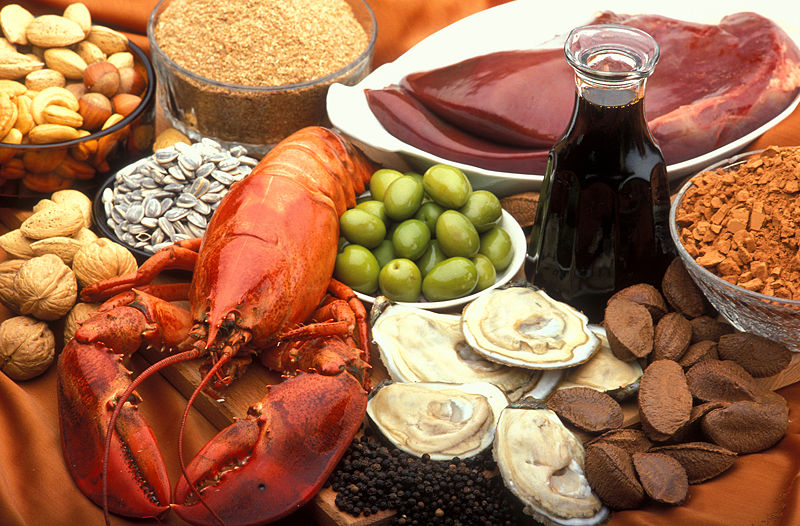This post aims to give an overview of what minerals are, and how the human body utilizes them when we (ideally) consume them in the required quantities. This post is Part 2 of the Diet and Nutrition overview, and the next in line after the Vitamins post, which you can access by clicking HERE.
To start off this post, the video below highlights the differences between vitamins and minerals. Quite often, people get the two confused, and although they are both equally important for the human body to function at its best state, there are some key differences.
Major Minerals Required By The Human Body
Calcium: Needed for muscle, heart and digestive system health, builds bone, supports synthesis and function of blood cells
Sources: Dairy products, eggs, canned fish with bones (salmon, sardines), green leafy vegetables, nuts, seeds, tofu, thyme, oregano, dill, cinnamon

Phosphorous: A component of bones (see apatite), cells, in energy processing, in DNA and ATP (as phosphate) and many other functions
Sources: Red meat, dairy foods, fish, poultry, bread, rice, oats

Potassium: A systemic electrolyte and is essential in co-regulating ATP with sodium
Sources: Sweet potato, tomato, potato, beans, lentils, dairy products, seafood, bananas, prune, carrot, orange

Sodium: A systemic electrolyte and is essential in co-regulating ATP with potassium
Sources: Table salt (sodium chloride), sea vegetables (seaweed, kelp, algae), milk, and spinach

Magnesium: Required for processing ATP and for bones
Sources: Spinach, legumes, nuts, seeds, whole grains, peanut butter, avocado

The following list of minerals needed for the human body’s optimal function are considered “trace elements.” The concentration of these trace elements in human tissue is far less than the concentration of the essential major minerals. According to Dr. Osamu Wada’s 2004 paper (Source 4 for further inquiry, definitely recommend checking this out) in the Japan Medical Association Journal, various epidemiological studies have suggested the possibility that trace element deficiencies are associated with a reduced anti-oxidant potential in organisms (which is believed to possibly underlie the onset of cancer and atherosclerosis), accelerated aging, developmental retardation in children, and an increased incidence of abnormal pregnancies, immunological abnormalities, and lifestyle-related diseases. Now what does this mean for you as the reader? Having an adequate intake of trace minerals in your diet, and supplementing them if not, is crucial to maintaining health as one ages and to reduce the risk of developing debilitating diseases down the line! Imagine being unable to care for your loved ones because of some neglected minerals in an earlier portion of your life….that’s pretty scary to me.
Sulfur: Essential component of all living cells.
Sources: Garlic, onions, eggs, and protein-rich foods

Iron: Required for proper functioning of proteins and enzymes, hemoglobin being a notable one
Sources: Meat, seafood, nuts, beans, dark chocolate

Chlorine: Needed for production of stomach acid, and for cellular transport mechanisms
Sources: Iodized salt

Cobalt: Necessary component of vitamin B12 and plays a very important role in forming amino acids, some proteins in nerve cells, and in creating crucial neurotransmitters
Sources: Fish, nuts, leafy green vegetables, cereals, and oats

Copper: Key component of proteins involved in electron transport and redox reactions, and in oxygen transport (within blood for example)
Sources: Liver, seafood, oysters, nuts, seeds, whole grains, legumes

Zinc: Second most abundant trace mineral, after iron, and appears in almost all enzymes. Critical for RNA and DNA metabolism, and testosterone production
Sources: Oysters, red meat, poultry, nuts, whole grains, dairy products

Manganese: Key component of various enzyme systems involved in macronutrient metabolism, bone formation, and free radical defense systems
Sources: Grains, legumes, seeds, nuts, leafy vegetables, tea, coffee

Molybdenum: Crucial component of enzymes that metabolize sulfur-containing amino acids, drugs and various toxins
Sources: Legumes, whole grains, nuts

Iodine: Critical to proper functioning of the endocrine, digestive, and reproductive systems
Sources: Seaweed (kelp or kombu), grains, eggs, iodized salt

Selenium: Crucial to proteins involved in thyroid hormone metabolism, reproduction, DNA synthesis, and protection from oxidative damage and infection
Sources: Brazil nuts, seafoods, organ meats, meats, grains, dairy products, eggs

This cool infographic below shows reference ranges for mineral concentrations in the human body. Are your levels proper?

Sources:
- https://www.youtube.com/watch?v=g-Sd8847sO8
- https://www.ncbi.nlm.nih.gov/pmc/articles/PMC2872358/
- https://en.wikipedia.org/wiki/Mineral_(nutrient)
- http://www.med.or.jp/english/pdf/2004_08/351_358.pdf
- https://www.ncbi.nlm.nih.gov/pubmed/26557039
- https://fullscript.com/blog/sulfur-rich-foods
- https://www.sciencedirect.com/science/article/abs/pii/S0006295214004572
- https://www.ncbi.nlm.nih.gov/pmc/articles/PMC2198910/
- https://ods.od.nih.gov/factsheets/Molybdenum-HealthProfessional/
- https://ods.od.nih.gov/factsheets/Selenium-HealthProfessional/
- All mineral pictures were taken from their respective wikipedia pages
Thanks for reading! Kindly share this post, and subscribe to HealthTrumpsWealth if you found it useful #healthtrumpswealth #minerals